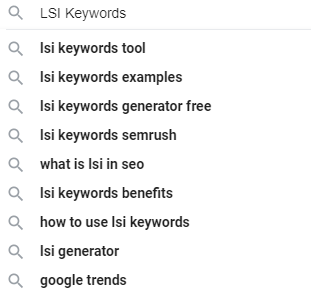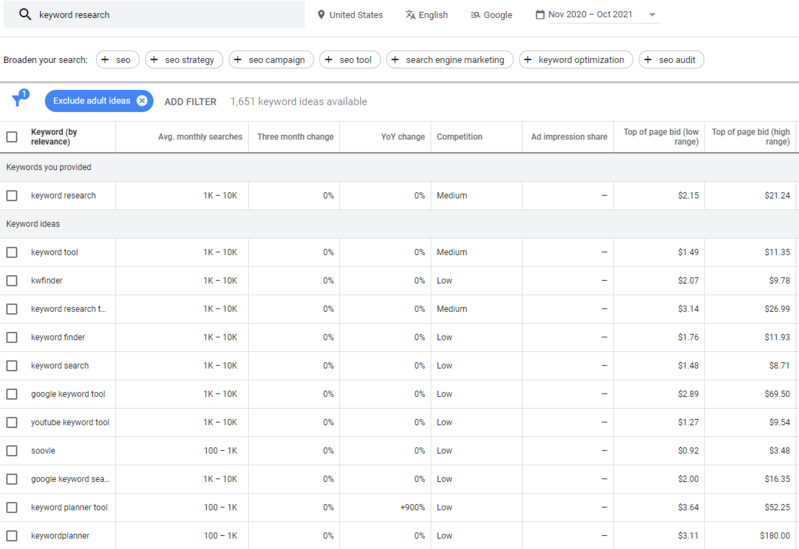How to Do Keyword Research for SEO (Actionable Guide)
SEO can be complex, but it boils down to three fundamentals:
- Keyword Research
- Content
- Link building
Of those three, keyword research is the foundation of SEO.
When we optimize websites for search engines, one of the main focuses is figuring out which particular keywords or phrases people are searching for. And if you make the wrong choice, you are stuck creating content that’ll never show up in search. Therefore, it is important to find do keyword research at the very beginning of SEO
This guide describes a step-by-step keyword research process on how to generate keyword ideas, how to analyze and choose the keywords that have the highest ranking potential, and how to prioritize your keywords.
If you follow this guide, you’ll build effective SEO strategies for ranking higher and ranking more keywords which will drive more organic traffic to your site. But let’s master the basics first.

Contents
What Is Keyword Research?
Keyword research is the process of finding the search terms that people enter into search engines while looking for an answer to a query. It can uncover queries to target, the popularity of theses queries, their ranking difficulty, and more.
Why Is Keyword Research Important?
SEO is the game of search. As long as people search using the search engines by typing a query into a search box, it will be crucial for marketers to do keywords research. That’s because keyword research provides you with specific search data that can help you answer questions like:
- What are people searching for?
- How many people are searching for it?
- In what format do they want that information?
By answering these questions, keyword research helps to define what your content is all about. And using them strategically can help you turn up in the right search results, making sure you attract a relevant audience.
Then, what will happen if you create content without keyword research?
- If you don’t know what are people searching for, your content won’t target he terms and topics your audience is interested in. it’s essentially useless.
- If your keyword search volume is too low or even nobody is searching it, leads won’t be able to discover your ads or organic listings, visit your website, and turn into paying customers.
- And, if the keywords you’re trying to rank for are too competitive, you might not get on the SERP at all.
How to Research Keywords for Your SEO Strategy?
Now that you have an idea of how important keywords can be, let’s find out how to do keyword research in 3 (complicated) steps.
Step 1. Find & Generate A Keyword List
1. Generating Topic Ideas Manually
You likely have a few keywords in mind that you would like to rank for. These will be things like your products, services, or other topics your website addresses, and they are great seed keywords for your research, so start there!
2. Google Suggestions
Google offers many keyword suggestions directly in the search to help people find the most relevant results. Here are 3 features you can leverage to find new keyword ideas:
Autocomplete
You probably noticed that Google tries to suggest related search queries directly in the search form. As these are based on real searches by people, they can be a nice inspiration for interesting keywords.
Start by typing your seed keyword into Google search and add letters (or numbers) to see the suggestions.

Searches related to…
This feature is very similar to autocomplete, but the suggestions are at the bottom of the results page.
People also ask
One of the features you can find in Google search results is the so-called “people also ask” snippet. It appears mostly for question queries and suggests other related questions.
These can serve as an inspiration for long-tail question-type keywords.
3. Using Google Keyword Planner to Find Keywords (Free)
If you’ve got a Google Ads account, then you’ve got access to Google’s free Keyword Planner. To navigate to this tool, log in to your Google Ads account and click the “Tools” bar on the right.
There are lots of ways to use Keyword Planner for keyword research. You can:
- Enter a broad topic to get specific keyword ideas
- Upload an existing list of keywords to check their search volume, seasonal trends and other data
- Enter a website URL (your own, or someone else’s) to see what keywords they are bidding on and ranking for.

4. Using Keyword Research Tools to Find Keywords
The most common way to find plenty of keyword opportunities is to use a keyword research tool. There are many tools on the market – Ahrefs, SEMrush, Moz, to name a few… we have picked 10 best free and paid keyword research tools for you!
You can enter seed keywords into a keyword research tool to discover hundreds of ideas.
5. Getting Keyword Ideas by Checking Competitors
This is an effective advanced tactic that you can use to find the right keywords for your website. When you research competitor keywords, you can identify the terms that already attract your target audience and leverage them for wider reach.
To find competitor keywords, first identify industry leaders who are excelling in SEO and then research their sites to see what keywords are driving traffic to them. Here is our complete guide on how to do competitor keyword research.
Step 2. Analyze and Filter Your Keywords
When determining which keywords to focus on, there are three key aspects to consider – popularity, difficulty and relevance of the keyword.
1. Gathering Search Volumes
First of all, we need to gather search volumes (how many people search for the given phrase) of the keyword we generate in the first step.
Google Keyword Planner will show you the range of monthly searches (ex. 1k-10k). You can get exact search volume for specific keywords if you are running an active Adwords campaign (paid advertisement).
For other keyword research tools, different keyword tools use different sources and different ways of data post-processing. As a result, there may be differences in search volume values. So, you’d better use the same keyword tool to compare the search volumes.
2. Evaluate Competition and Difficulty
To further evaluate the keywords ideas, you will have to look at how competitive they are and how difficult it will be to rank for these keywords.
Keyword difficulty is a metric that estimates how hard it is to rank for a certain keyword. The higher is the keyword difficulty, the harder it will be to rank for the keyword with your website.
Here is the complete guide on how to check and measure keyword difficulty.
3. Understanding Searcher Intent
So you’ve found a high volume, relevant keyword. But do you know what types of content Google is presenting on the first page? Based on your research, what types of content are searchers looking for? Do they want guidance, how-to articles, a list of nearby shops, or something else completely?
Now, we’ll discuss search intent.
Search intent (also called user intent) is known as the main goal users have when typing a query in search engines.
There are 4 main types of searcher intents:
- Navigational – people search for a specific page or website.
- Informational – people search for specific information such as definitions or recipes.
- Transactional – people search for something when they are ready to make a purchase.
- Commercial investigation – people search for the comparison of products or reviews.
You should determine what keywords to focus on based on your needs. For example, if one of your goals is to make money online, it’s important that you select commercial intent keywords.
Step 3: Segment and Prioritize Your Keywords
Now you’ve a list of keywords with metrics like search volume, keyword difficulty and search intent. Each of keyword presents a new opportunity for your business — but you’ll need to prioritize them.
Let’s segment and prioritize your final selection of keywords so that they are a little easier to manage and implement in your SEO strategy.
Universal criteria for SEO segmentation are semantics, searcher intent, search volume, and competition. Taking all criteria into account, you can group your keywords into three groups: high opportunity, medium opportunity, and low opportunity.
High-Opportunity keywords
- Long-tail or body keywords
- Informational, commercial, or transactional intent
- Low to medium competition
- Medium to high search volume
Medium-Opportunity keywords
- Body keywords
- Informational or commercial intent
- Medium competition
- Low to medium search volume
Low-Opportunity keywords
- Head keywords
- Informational or navigational intent
- High competition
- Medium search volume
Then, you should prioritize the high-opportunity keywords, as these are your best opportunities to meet a specific need and drive traffic.
Also, if you found keywords that already have pages for, you can take these keywords and add them to your title tags, header tags, meta descriptions, and other important HMTL elements, as well as the body copy on each of these pages.
Conclusion
Once you’ve done all of the things mentioned above, you can start your keyword strategy. However, doesn’t mean that your work ends there. A good keyword strategy requires an adequate follow-up which includes monitoring and tweaking things constantly.
Also, as you optimize your site, you can continue to do keyword research as much as you need. Over time, this will help you better understand your customers, competitors, and your business.
